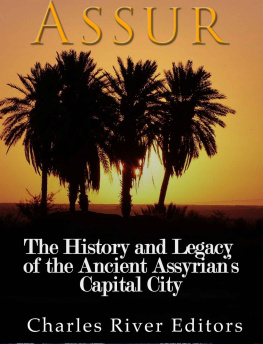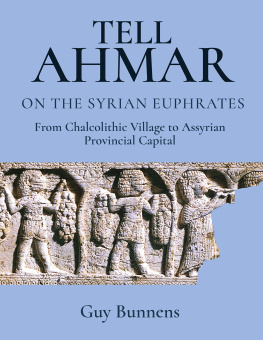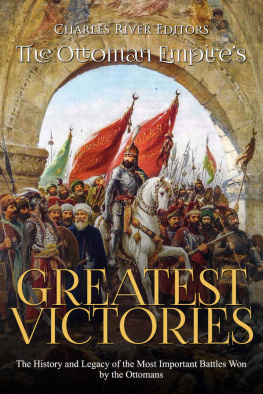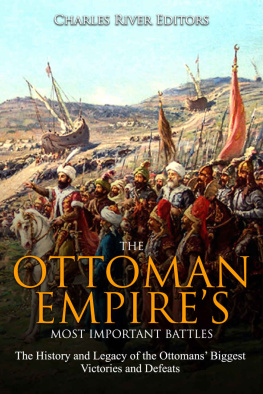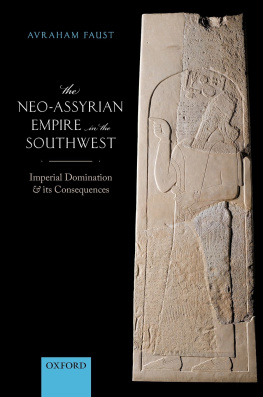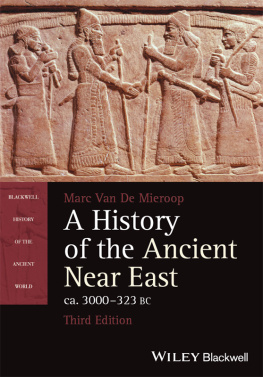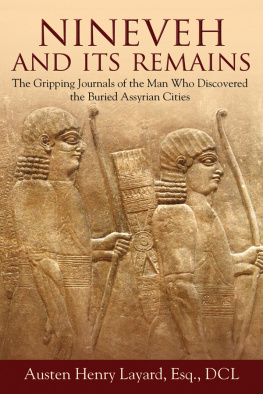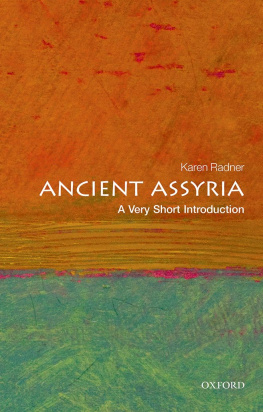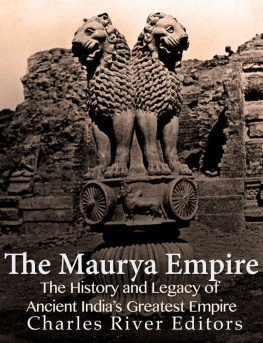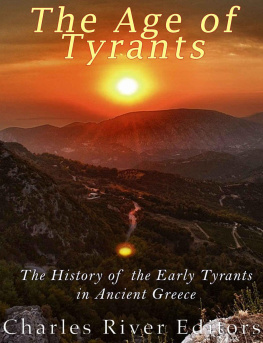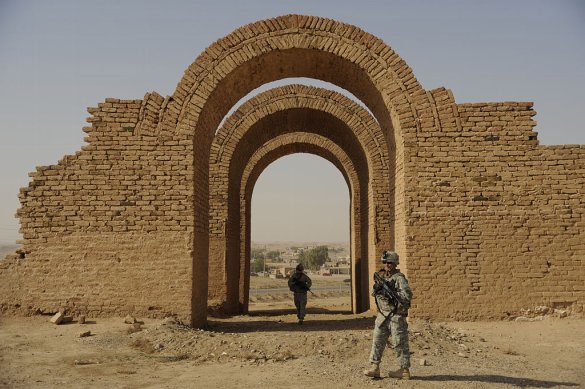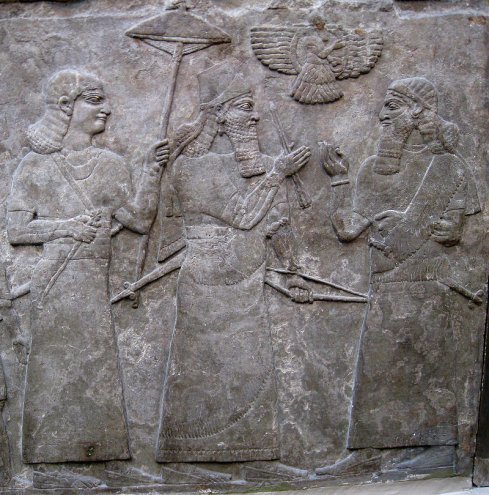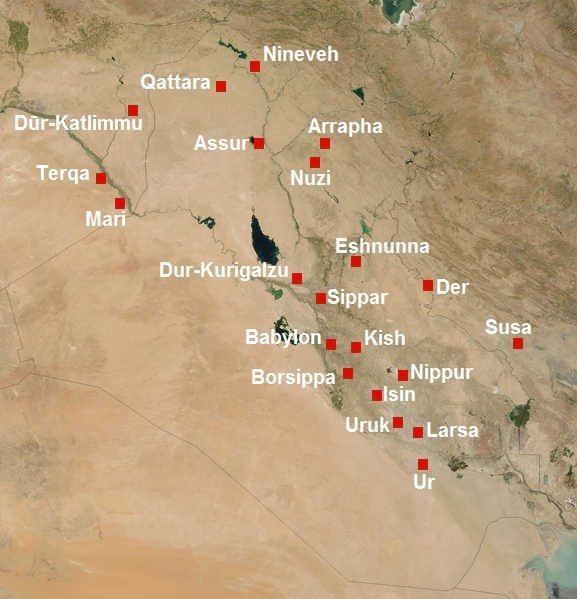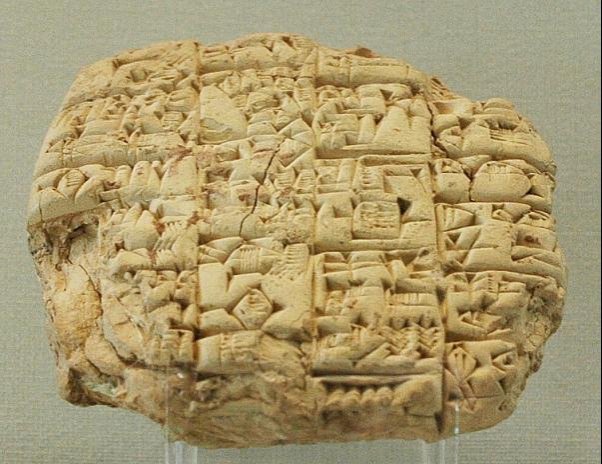Charles River Editors - Assur: The History and Legacy of the Ancient Assyrian Empire’s Capital City
Here you can read online Charles River Editors - Assur: The History and Legacy of the Ancient Assyrian Empire’s Capital City full text of the book (entire story) in english for free. Download pdf and epub, get meaning, cover and reviews about this ebook. year: 2016, publisher: Charles River Editors, genre: History. Description of the work, (preface) as well as reviews are available. Best literature library LitArk.com created for fans of good reading and offers a wide selection of genres:
Romance novel
Science fiction
Adventure
Detective
Science
History
Home and family
Prose
Art
Politics
Computer
Non-fiction
Religion
Business
Children
Humor
Choose a favorite category and find really read worthwhile books. Enjoy immersion in the world of imagination, feel the emotions of the characters or learn something new for yourself, make an fascinating discovery.
- Book:Assur: The History and Legacy of the Ancient Assyrian Empire’s Capital City
- Author:
- Publisher:Charles River Editors
- Genre:
- Year:2016
- Rating:3 / 5
- Favourites:Add to favourites
- Your mark:
Assur: The History and Legacy of the Ancient Assyrian Empire’s Capital City: summary, description and annotation
We offer to read an annotation, description, summary or preface (depends on what the author of the book "Assur: The History and Legacy of the Ancient Assyrian Empire’s Capital City" wrote himself). If you haven't found the necessary information about the book — write in the comments, we will try to find it.
*Includes ancient accounts describing Assur and the Assyrians
*Includes a bibliography for further reading
*Includes a table of contents
All who hear the news of your destruction clap their hands for joy. Did no one escape your endless cruelty? - Nahum 3:19
In northern Iraq, on the banks of the Tigris River, lie the ruins of the ancient city of Aur. This was the first capital and the most important religious center of the Assyrian Empire. Underneath the cover of sand and soil are almost six meters of dense stratigraphic layers that reveal the passage of millennia. Known today as Qalat Sherqat, and also as Kilah Shregat, the city dates back to the 3rd millennium BCE. In that time period, the Assyrian army became the largest yet seen, and their warriors were both the greatest and cruelest in the land. They conquered an empire from the Persian Gulf to the Mediterranean Sea; they despoiled the great city of Babylon, and they enslaved the tribes of Israel. Even the pharaoh of Egypt paid them tribute. No army had ever carried war so far.
Indeed, Aur was the heart of one of antiquitys most infamous war machines. When scholars study the history of the ancient Near East, several wars that had extremely brutal consequences (at least by modern standards) often stand out. Forced removal of entire populations, sieges that decimated entire cities, and wanton destruction of property were all tactics used by the various peoples of the ancient Near East against each other, but the Assyrians were the first people to make war a science. When the Assyrians are mentioned, images of war and brutality are among the first that come to mind, despite the fact that their culture prospered for nearly 2,000 years.
Like a number of ancient individuals and empires in that region, the negative perception of ancient Assyrian culture was passed down through Biblical accounts, and regardless of the accuracy of the Bibles depiction of certain events, the Assyrians clearly played the role of adversary for the Israelites. Indeed, Assyria (Biblical Shinar) and the Assyrian people played an important role in many books of the Old Testament and are first mentioned in the book of Genesis: And the beginning of his kingdom was Babel and Erech, and Akkad, and Calneh, in the land of Shinar. Out of that land went forth Ashur and built Nineveh and the city Rehoboth and Kallah. (Gen. 10:10-11).
Although the Biblical accounts of the Assyrians are among the most interesting and are often corroborated with other historical sources, the Assyrians were much more than just the enemies of the Israelites and brutal thugs. A historical survey of ancient Assyrian culture reveals that although they were the supreme warriors of their time, they were also excellent merchants, diplomats, and highly literate people who recorded their history and religious rituals and ideology in great detail. The Assyrians, like their other neighbors in Mesopotamia, were literate and developed their own dialect of the Akkadian language that they used to write tens of thousands of documents in the cuneiform script (Kuhrt 2010, 1:84).
Although war played such a central role in Assyrian society, they were also active and prosperous traders, and trade was an essential part of Aurs growth from its earliest stages. Strangely, even during military campaigns, merchants from the city engaged in commercial interactions with the enemy, for example with the Aramaeans during the campaigns of Adad Nirari II. As opposed to other cities in Mesopotamia, Aurs location meant that it was especially subjected to the influences of its many neighbors in southern Mesopotamia; Anatolia, Syria, the Zagros Mountains, and even from the barbarian tribes north of the Caucasus Mountains. Their presence can be seen today in the architecture and artifacts of the ruined city.
Charles River Editors: author's other books
Who wrote Assur: The History and Legacy of the Ancient Assyrian Empire’s Capital City? Find out the surname, the name of the author of the book and a list of all author's works by series.

